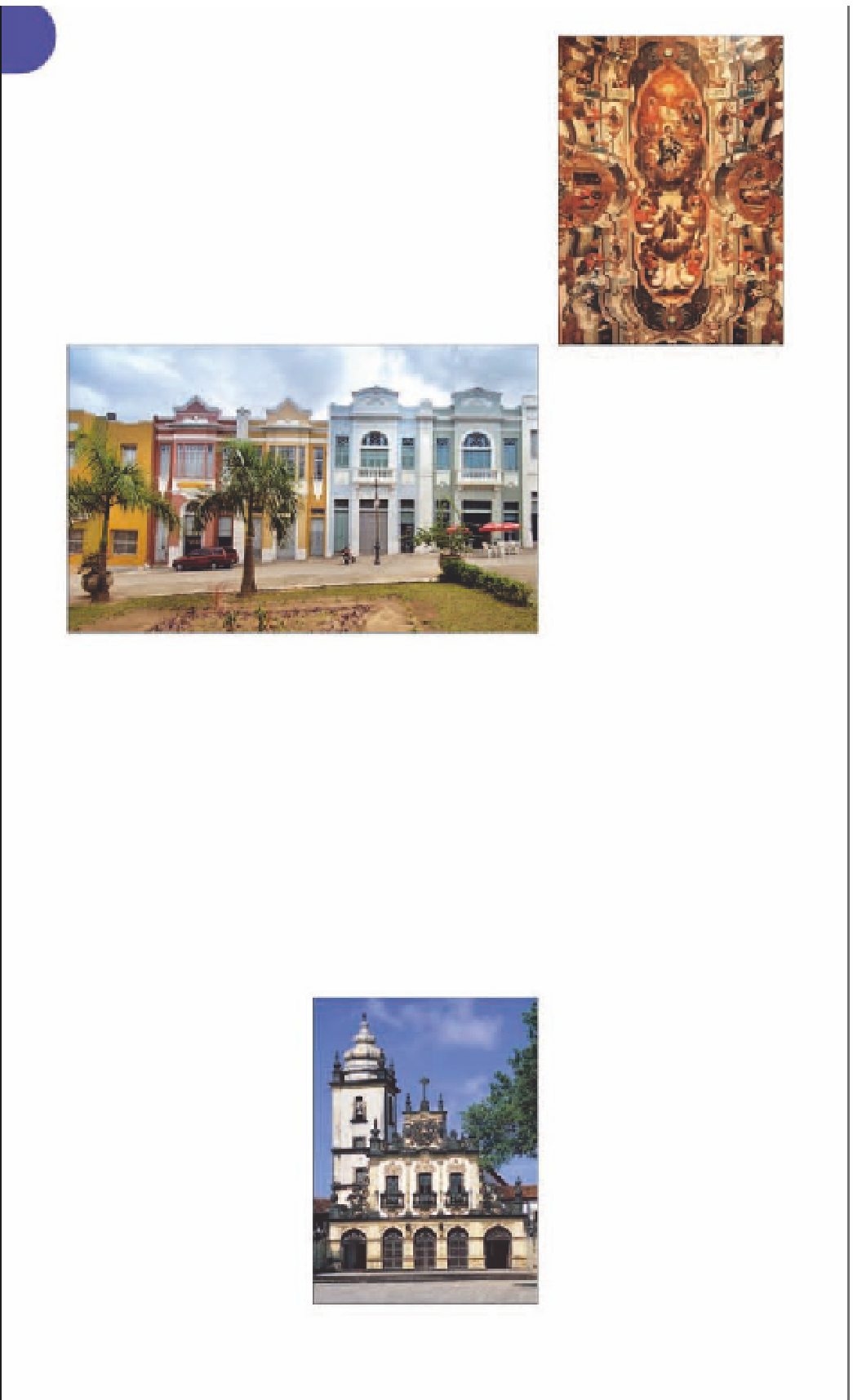Travel Reference
In-Depth Information
João Pessoa
1
Founded in 1585 as Nossa Senhora das Neves, the city
derives its present name from a former governor of
Paraíba. Brazil's third oldest city, João Pessoa maintains
an air of old-world charm, with a host of well-restored
colonial churches, convents, and monasteries. Local visi-
tors, however, flock here mainly for the easy atmosphere
of its great white sandy beaches along the coastline.
The dense tropical forest that once covered the coastal
strip of Paraíba now thrives only in patches, one of
which lies within João Pessoa, forming one of the largest
areas of natural wilderness in any city in the world.
Rococo-style painting on Igreja de
São Francisco's ceiling
painting on the ceiling of the
church depicts various images
of St. Francis. Even older than
the church by a few decades
is a stone cross across the
courtyard. The church is part
of the larger Centro Cultural
de Sao Francisco complex,
which also includes the
Convento de Santo Antônio,
chapels, and a museum of
popular and sacred art, the
result of grand-scale reforms
carried out in 1718 and 1788.
Old majestic colonial buildings lining a street, Centro Histórico
Exploring João Pessoa
One of the oldest and less
developed cities in Brazil,
João Pessoa has a small
historic core, which remains
little changed despite the
modernization drive. It is
located a bit inland, on a
small hill overlooking the
Rio Sanhauá and Rio Paraíba.
Modern João Pessoa, with fast
emerging skyscrapers, gravi-
tates towards the beaches.
Due to a state law restricting
the height of buildings within
490 ft (150 m) of the shore-
line to four stories or less,
the waterfront is free of the
curtain wall of concrete high-
rises that afflict some other
Brazilian beachfronts.
R
Igreja de São Francisco
Praça São Francisco, Centro Histórico.
Tel
(083) 3218 4505.
#
9am-noon
& 2-5pm Tue-Sun.
&
8
P
Mosteiro de São Bento
Rua General Osório, Centro Histórico.
#
on request Mon-Sat.
5
7am.
Built in the 17th century, this
working monastery is a
shining example of simplicity.
Its unembellished, well-
restored interior features a
curved wooden ceiling.
One of the most spectacular
churches in the city sits
majestically atop a hill that
bears the same name. The
most striking feature of this
impressive 18th-century
church is the tower topped
with an oriental dome. The
altar contains an 18th-century
statue of St. Benedict, one of
the few black saints. The
beautiful Rococo-style
L
Praia de Tambaú
4 miles (7 km) E of city center.
João Pessoa's most popular
urban beach is Praia de
Tambaú, a 4-mile (7-km)
long stretch of sand lined
with restaurants, cafés, and
interesting food and craft
stalls. In the evenings, locals
stroll the seawall, enjoying
the cool breeze.
R
Catedral Basílica de Nossa
Senhora das Neves
Rua General Osório, Centro.
Tel
(083)
3221 2503.
#
2-5pm Mon-Fri, 5-
7pm Sat.
5
5pm Mon-Fri; 7:30pm
Sat; 6am, 9am & 7:30pm Sun.
&
L
Praia do Cabo Branco
S of Praia do Tambaú.
Better suited for swimming
than Tambaú, Cabo Branco
is a residential beach area
looking out over the eastern-
most point in the Americas,
Ponta do Seixas
(Seixas
Point). The point juts out into
the ocean, and is topped by
a small lighthouse, with a
monument marking the spot.
After four major renovations,
little remains of the original
cathedral built in 1586. The
interior maintains a striking
harmony, unlike many of
the elaborate Rococo-style
churches in Brazil.
Façade of Igreja de São Francisco,
João Pessoa's celebrated church
For hotels and restaurants in this region see pp379-81 and pp405-406



































